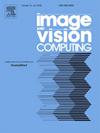在具身人工智能中应对感知攻击的新型深度伪造检测模型
IF 4.2
3区 计算机科学
Q2 COMPUTER SCIENCE, ARTIFICIAL INTELLIGENCE
引用次数: 0
摘要
具身人工智能(AI)代表了新一代机器人技术与人工智能的结合,是当前研究的前沿领域。为了减少深度伪造技术对具身感知的影响,提高具身人工智能的安全性和可靠性,本文提出了一种新的深度伪造检测模型,并将其命名为 "BCL"(Balanced Contrastive Learning)平衡对比学习策略。该模型将无监督对比学习和有监督对比学习与深度赝品检测结合起来,有效地从个体层面和类别层面提取了赝品图像的底层特征,从而获得了更具辨别力的特征。此外,还提出了多尺度注意力交互模块(MAI)来丰富特征的代表性。通过交叉融合编码器不同感受野的语义特征,可以挖掘出更有效的深度伪造痕迹。最后,大量实验证明,我们的方法在数据集内、跨数据集和跨操作场景中都具有良好的性能和泛化能力。本文章由计算机程序翻译,如有差异,请以英文原文为准。
A new deepfake detection model for responding to perception attacks in embodied artificial intelligence
Embodied artificial intelligence (AI) represents a new generation of robotics technology combined with artificial intelligence, and it is at the forefront of current research. To reduce the impact of deepfake technology on embodied perception and enhance the security and reliability of embodied AI, this paper proposes a novel deepfake detection model with a new Balanced Contrastive Learning strategy, named BCL. By integrating unsupervised contrastive learning and supervised contrastive learning with deepfake detection, the model effectively extracts the underlying features of fake images from both individual level and category level, thereby leading to more discriminative features. In addition, a Multi-scale Attention Interaction module (MAI) is proposed to enrich the representative ability of features. By cross-fusing the semantic features of different receptive fields of the encoder, more effective deepfake traces can be mined. Finally, extensive experiments demonstrate that our method has good performance and generalization capabilities across intra-dataset, cross-dataset and cross-manipulation scenarios.
求助全文
通过发布文献求助,成功后即可免费获取论文全文。
去求助
来源期刊

Image and Vision Computing
工程技术-工程:电子与电气
CiteScore
8.50
自引率
8.50%
发文量
143
审稿时长
7.8 months
期刊介绍:
Image and Vision Computing has as a primary aim the provision of an effective medium of interchange for the results of high quality theoretical and applied research fundamental to all aspects of image interpretation and computer vision. The journal publishes work that proposes new image interpretation and computer vision methodology or addresses the application of such methods to real world scenes. It seeks to strengthen a deeper understanding in the discipline by encouraging the quantitative comparison and performance evaluation of the proposed methodology. The coverage includes: image interpretation, scene modelling, object recognition and tracking, shape analysis, monitoring and surveillance, active vision and robotic systems, SLAM, biologically-inspired computer vision, motion analysis, stereo vision, document image understanding, character and handwritten text recognition, face and gesture recognition, biometrics, vision-based human-computer interaction, human activity and behavior understanding, data fusion from multiple sensor inputs, image databases.
 求助内容:
求助内容: 应助结果提醒方式:
应助结果提醒方式:


